Organization
PhD Coordinator - Alessandro Paciaroni
This email address is being protected from spambots. You need JavaScript enabled to view it.
Members of the PhD Board
Giuseppina Anzivino - Università degli Studi di Perugia
Maria Elena Ascioti - Student
Mateusz Bawaj - Università degli Studi di Perugia
Bruna Bertucci - Università degli Studi di Perugia
Giovanni Carlotti - Università degli Studi di Perugia
Claudia Cecchi - Università degli Studi di Perugia
Silvia Corezzi - Università degli Studi di Perugia
Francesco Cottone - Università degli Studi di Perugia
Paolo Cristarella - Student
Sara Cutini - INFN
Livio Fanò - Università degli Studi di Perugia
Suchandra Dutta - Saha Iinstitute for Nuclear Physics
Emanuele Fiandrini - Università degli Studi di Perugia
Luca Gammaitoni - Università degli Studi di Perugia
Stefano Germani - Università degli Studi di Perugia
Maura Graziani - Università degli Studi di Perugia
Gianluca Grignani - Università degli Studi di Perugia
Troels Harmark - Niels Bohr Institute - University of Copenaghen, DK
Pasquale Lubrano - INFN
Alessandra Luchini - Università degli Studi di Perugia
Marco Madami - Università degli Studi di Perugia
Maurizio Mattarelli - Università degli Studi di Perugia
Arianna Morozzi - INFN
Andrea Orecchini - Università degli Studi di Perugia
Simone Pacetti - Università degli Studi di Perugia
Alessandro Paciaroni - Università degli Studi di Perugia
Sara Palmerini - Università degli Studi di Perugia
Orlando Panella - INFN
Monica Pepe - INFN
Mauro Piccini - INFN
Michele Punturo - INFN
Matteo Rinaldi - INFN
Alessandro Rossi - Università degli Studi di Perugia
Attilio Santocchia - Università degli Studi di Perugia
Leonello Servoli - INFN
Daniele Spiga - INFN
Silvia Tacchi - CNR-IoM
Nicola Tomassetti - Università degli Studi di Perugia
Gino Tosti - Università degli Studi di Perugia
Helios Vocca - Università degli Studi di Perugia
Xin Wu - University of Geneve, CH
Boards
Coordination - resp. Alessandro Paciaroni
Livio Fanò, Alessandro Paciaroni, Mauro Piccini (INFN), Silvia Tacchi (CNR), Nicola Tomassetti
Quality Assurance - resp. Silvia Corezzi
Silvia Corezzi, Alessandro Rossi, Valeria Libera
Steering Group - resp. Patrizia Cenci
Alessandro Paciaroni, Gianluca Gubbiotti (CNR), Gianluca Grignani, Patrizia Cenci (INFN), Livio Fanò, Silvia Corezzi, Luca Gammaitoni, Lucia di Masso (SERMS srl), Andrea Marini (Idea-re)
Working groups and contact persons
Teaching
Claudia Cecchi - contact person
This email address is being protected from spambots. You need JavaScript enabled to view it.
Marco Madami, Simone Pacetti, Alessandro Paciaroni, Matteo Rinaldi, Leonello Servoli
Communication
Monica Pepe - contact person
This email address is being protected from spambots. You need JavaScript enabled to view it.
Alessandro Rossi, Monica Pepe, Sara Palmerini, Simone Pacetti, Silvia Tacchi
Agreements and networks
Marta Orselli - contact person
This email address is being protected from spambots. You need JavaScript enabled to view it.
Giuseppina Anzivino, Bruna Bertucci, Andrea Orecchini, Marta Orselli, Leonello Servoli
General description
The PhD program in Physics at the University of Perugia has been active since the XXXVI cycle. It follows the previous PhD program in "Sciences and Technologies for Physics and Geology," established in 2014 through the merger of the Physics and Geology departments.
Starting from the XXXIX cycle, the PhD in Physics has evolved into an associated program between INFN and the University, aligning their visions and enhancing the quality of the PhD. This evolution includes a substantial increase in the number of funded students and an improved offering in terms of preparation and research opportunities.
The PhD in Physics, taking into consideration significant long-term projects such as “SUPER-C” (awarded the Department of Excellence by MUR), Chaos, and Vitality (both funded by PNRR), is structured into three curricula:
The Universe curriculum combines research and teaching in the areas related to the study and observation of the Universe. In this context, the range of skills and research carried out in Perugia revolves around the research themes of the Space and Universe Perugia Research Cluster, the Department's Excellence-selected development project for the 2023-2027 five-year period:
-High-energy astrophysics, with participation in experiments observing gamma rays from both terrestrial and space-based sources.
-Gravitational wave physics, with participation in international projects involving gravitational interferometry.
-Relativistic astrophysics, focused on the study of black holes and sources of gravitational waves.
-Astroparticle and space physics, with participation in experiments detecting cosmic rays and searching for antimatter in space.
-Nuclear astrophysics, with participation in experiments involving nuclear reactions of astrophysical interest.
These research endeavors are pursued in various aspects, including theoretical, experimental, data analysis, and the development of new technologies. Participation in international experiments and projects benefits from a dense network of scientific collaborations, integrated into the research plans of institutions and agencies such as the National Institute of Nuclear Physics, the National Institute of Astrophysics, and the Italian Space Agency.”;
The Physics of Fundamental Interactions curriculum is related to the study and characterization of fundamental interactions among elementary constituents. It is particularly supported by the activities of experimental and phenomenological research groups, which, thanks to significant, fruitful, and well-established multi-decade activities, tackle today's most important challenges both in identifying signals from major laboratories and experimental centers and in understanding and interpreting them. Technological developments necessary for the design and realization of next-generation experimental apparatuses are also addressed, projecting the activity far into the future. The curriculum also includes the field of scientific computing and the so-called "data science," specifically focused on the development of innovative computational models for the most advanced experiments. Research groups, generally multidisciplinary, are highly productive scientifically, benefit from well-established international relationships, and are composed of university staff and personnel from the National Institute of Nuclear Physics (INFN). Students in the curriculum typically spend an average of one year of their doctoral program abroad, at other institutions with active collaborations or often in large European and non-European research infrastructures.
The Applied and Interdisciplinary Physics curriculum combines research and teaching in the areas of Material Physics in a broad sense, with a particular focus on applications in the field of nano-materials, bio-materials, and complex systems in general. The involved topics include nanomagnetism, spintronics, nanomechanics, surface physics, physical processes in biological systems, soft matter, nanostructured systems, mechanobiology, energy transformation processes at micro and nanoscales, information and communication technology, and the design and development of neutron spectrometers. Experimental activities encompass various techniques such as Brillouin and Raman spectroscopy, magneto-optical Kerr effect, optical interferometry, Scanning Electron Microscopy, Atomic Force Microscopy, and optical and UV spectroscopy. Additionally, different groups conduct experimental activities in neutron spectroscopy, synchrotron light, and free-electron laser spectroscopy at national and international large-scale facilities such as ELETTRA (Trieste), Institut Laue-Langevin (Grenoble, FR), and European Synchrotron Radiation Facility (Grenoble, FR). The experimental work is complemented by analysis methodologies like Micromagnetic and Micromechanical Simulations.
This three-year course is designed to provide high-level education and research skills in Physics, catering to the needs of both the academic world and the job market. Due to the internationalization of the PhD school and the outstanding research activities conducted in both theoretical and experimental Physics within our department, the program offers the opportunity to obtain a dual PhD degree through international agreements with various prestigious universities and research institutes.
Research fields
The student activities are coordinated by a supervisor, which is assigned according to the research field chosen by the student for his/her thesis among those active in the Department: Applied Physics, Astrophysics and Astroparticle Physics, Biophysics, Gravitational Waves and Multimessenger Astronomy, Medical Physics, Nuclear and Subnuclear Physics, Particle Physics, Soft Matter Physics, Solid State Physics and Theoretical Physics.
The supervisor is responsible for guiding the student through the training courses and her/his research project by integrating the student activity in the local group, as well as by ensuring her/him wide visibility in the international context.
Educational and Training Activities
The educational activities for PhD students are planned for at least 30 ECTS credits over the three-year period, including a minimum of 18 ECTS credits of face-to-face teaching provided by the Physics Doctoral Program, a minimum of 6 ECTS credits of interdisciplinary, multidisciplinary, and transdisciplinary teaching offered by the University, and a minimum of 3 ECTS credits from seminar activities and participation in national and international schools and conferences.
In more detail, in addition to 10 ECTS credits of inter-curricular thematic courses, PhD students have a choice of more specialized elective courses for approximately 6 ECTS credits per curriculum, making the total educational offering of face-to-face courses provided by the Physics Doctoral Program 30 ECTS credits.
In the case of face-to-face teaching, 1 ECTS credit corresponds to 6 hours. For other training activities, the equivalence is determined by the guidelines of the PhD board
Summary of Courses for Cycle XLI HERE
G-calendar of the courses HERE

Doctoral program courses of Cycle XL
The detailed agenda is here (google calendar / Cycle XL)
Advanced Topics in Theoretical Physics - agenda
Summaries of Taught Courses Cycle 40 - here
Doctoral program courses of Cycle XXXIX
The complete offer is available here
The detailed agenda is continuously updated and is here (google calendar)
The description of the topics taught in the courses is here
Doctoral program courses of Cycle XXXVIII
General information about the courses is available here
The detailed agenda is continuously updated and is here (google calendar)
Doctoral program courses of Cycle XXXVII
First semester
1) Introduction to Effective Field Theory
2) Probability and measurement uncertainty
3) Nanosystems and advanced materials
4) EU funding: opportunities for Research and Innovation and proposal writing
Second semester
5) Teaching and Learning Physics at University
6) Multimessenger Astrophysics - from em multifrequency to gravitational waves
7) Applied Machine Learning
8) Scientific Writing for Physicists
Total: 18 CFU.
The full agenda is available here:
https://docs.google.com/spreadsheets/d/1cihwSy0PeuZmJuqr9WMRW-8htB2vHdTqaKAOaQH8-Os/edit?usp=sharing
Doctoral program courses of Cycle XXXVI
Support material for the first-year courses is available here.
First semester
1) Introduction to Effective Field Theory (EFT)
- Module I - EFT in the framework of the Standard Model physics (Dario Buttazzo - INFN Pisa).
- Module II - Effective gauge theory in spintronics (Prof. Gen Tatara - Riken).
- Module III - Experimental searches EFT-based (Pietro Govoni - MIB).
2) Probability and measurement uncertainty (Contact person: C. Cecchi)
- Module I - (Prof. Giulio D'Agostini - Univ. Roma1).
3) Nanosystems and advanced materials (Contact person: A. Paciaroni).
- Nanosystems I (Prof. Paolo Postorino - Univ. Roma1).
- Nanosystems II (Dott.ssa Maddalena Pedio - CNR).
- Nanosystems III (Prof.ssa Stefania Chiesa - Univ. Ca' Foscari Venezia e Prof.ssa Elena Garlatti - Univ. di Parma)
Second semester
4) Multimessenger Astrophysics - from em multifrequency to gravitational waves (Contact persons: G. Tosti, C. Cecchi).
- Module I - Electromagnetic waves+neutrini - (Paolo Padovani - ESO Munich).
- Module II - Onde gravitazionali (Michele Punturo - INFN Perugia).
- Module III (Dott. Giuseppe Greco - Univ. di Urbino).
5) Physics at LHC
- Module I - (Dott. Michele Gallinaro - Lip Lisbona).
6) Introduction to Atmospheric Physics, Climate and COPERNICUS DATA STORE (CDS).
- Module I - (Dott.ssa Paolina Cerlini - Univ. Perugia).
7) Teaching and Learning Physics at University.
- Module I - (Dott. Giovanni Organtini - INFN Roma1).
Total: 18 CFU.
Electives
External courses (from 1.5 CFU)
1) Advanced topics in current and future researches in experimental particle physics - experimental particle physics
2) Advanced topics in current and future researches in theoretical particle physics - theoretical particle physics
3) Future High-Energy Colliders - experimental and theoretical particle physics
4) Thematic Seminar Cycle: Future experiment and facilities (gravity, space, ESS, low energy searches…) - experimental physics
5) Thematic Seminar Cycle: New technologies for future experiments - experimental physics
6) Near Edge X-Ray Absorption Spectroscopy for the study of surfaces and nanostructured materials - soft matter and solid-state physics - (M. Pedio)
7) Sources for Ultrafast Spectroscopy - soft matter and solid-state physics
Internal courses (from 1.5 CFU)
8) Advanced Particle Physics - particle physics
9) Flavour Physics (K+B) - particle physics
10) Nuclear Astrophysics - astrophysics
11) Advanced low-energy experimental physics - soft matter and solid-state physics
12) Spintronics - soft matter and solid-state physics
13) Fundamental physical limits in computing - soft matter and solid-state physics
14) Ionizing Radiation and Space Weather - astroparticle physics
15) Photoelectron Spectroscopy - soft matter and solid-state physics
At least 6 CFU.
1) Italian School of Magnetism - (POC Giovanni Carlotti).
2) International Doctorate School in Nuclear Physics, “Frontiers in Nuclear and Hadronic Physics, Galileo Galilei Institute (GGI) in Florence - (POC Sergio Scopetta).
3) European School of Instrumentation in Particle & Astroparticle Physics, Technologies and Applications - (POC Bruna Bertucci).
4) Winter School in Biotechnology - (POC Daniele Fioretto).
5) LACES School, Galileo Galilei Institute (GGI) for Theoretical Physics di Arcetri (Firenze) - (POC Gianluca Grignani).
6) International School of Pure and Applied Biophysics on Quantitative analysis of optical imaging for Medicine and Biophysics: foundations, applications and perspectives - (POC Silvia Caponi).
7) Detectors and Electronics for High Energy Physics - (POC Bruna Bertucci / Alessandro Rossi).
8) Seminar on Software for Nuclear, Subnuclear and Applied Physics - (POC Bruna Bertucci).
9) Conference and Course on Frontiers in Water Biophysics (FWB), Erice - (POC Lucia Comez).
10) SOSC - International School on Open Science Cloud (POC Daniele Spiga)
11) SAPP school - Dark Matter, from theory to detection, Vienna (POC Livio Fanò).
Seminars on topics that are not strictly related to the student research projects offer top-level training aimed at broadening the skills and increasing the awareness of PhD students.
In addition to the general seminars proposed by the Department and the partner research institutions (CNR and INFN), the Doctoral Advisory Committee organizes lectures given by external experts, members of the committee and former PhD students.
PERAPS ("Perugia Advanced Physics Seminar") and PHP ("Physics Highlights Perugia"), continuously updated.
- https://agenda.infn.it/category/1414/ (up to 2023)
- https://www.fisgeo.unipg.it/physdid/PerAPS2023/index.html#portfolio (from 2023)
- https://tinyurl.com/EventsAndSeminars
Attending seminars organized by national or international institutions can be also included in the doctoral training.
- Seminars from the INFN Section of Roma and from CERN.
The doctoral program includes visiting periods in other Italian universities or research institutes (average research stay of 3 months). Research stay periods will be possible as well abroad, either in one of the cooperating partner institutions involved in this PhD program (average research stay of 12 months) or in other high-level foreign institutions (average research stay of 6 months).
The PhD course benefits of several contracts of cooperation with the most prestigious universities and the most important research institutions. A collaboration agreement is established with CNR-IOM and INFN funding agencies that offer scholarship grants and the opportunity of participating in international research projects of excellence conducted at the most important large scale facilities in the field.
An international degree program is implemented jointly with other universities: an enduring relationship of cooperation has been established with the Niels Bohr Institute in Copenhagen, while the collaboration agreement with the Universities of Geneva, Ghent and Uppsala is being finalized. The double PhD doctoral degree will be awarded after spending a visiting period of at least 6 months, with the attribution of 5 CFU/ECTS per month.
The PhD course is being accredited to the International Doctorate Network in Particle Physics, Astrophysics and Cosmology (IDPASC).
The doctoral training program comprises joint activities with other doctoral curricula of the University of Perugia, as described in the following.
Disciplinary and interdisciplinary training, advanced linguistic and computing training:
- Foreign language courses at CLA (Centro Linguistico d'Ateneo/University Language Center) according to the Common European Framework of Reference (CEFR), of six-month (10 CFU/ECTS) or annual (13 CFU/ECTS) duration;
- Specific training to deepen the knowledge of PhD students with specialized workshops in collaboration with the Italian Association of Physics Students. The workshops consist of several teaching units, with a final exam of 1 CFU/ECTS each, concerning data analysis (ROOT, Mathematica, TensorFlow, R) and word processing (LaTeX).
Research management and knowledge of funding systems. Four courses of 1 CFU/ECTS each concerning:
- Research planning and development;
- Preparation and management of research project budgets;
- Project management for work schedule and budget report;
- Managing relationships with funding partners.
The exploitation of research results and intellectual property. Six courses of 1 CFU/ECTS each concerning:
- The transition from basic to applied research;
- Techniques for research exploitation;
- Funding for applied research;
- Protection of intellectual property;
- University support for patent application;
- Industry and research spin-off.
All courses described in the present section will be concluded by a final exam.
Postdoctoral job opportunities
The main professional opportunities for a PhD in physics are the scientific activities in national and international research institutions: universities, laboratories, large scale facilities and centers of excellence.
Our graduates easily find positions in the institutions they collaborated with and they visited during the PhD, thanks to the consolidated credits that the members of the Department of Physics and Geology have in the international research circuits.
The doctoral program gives students the opportunity to spend periods of the research stay, within the framework of the main European and non-European mobility programs, in the most important and prestigious large scale facilities and research centers (CERN, ASI, VIRGO / EGO and ILL, to name the major ones), and in many universities all over the world.
Furthermore, basic research carried out in collaboration with other research institutions (CNR and INFN), such as those related to space exploration, energy physics and functional characterization of materials, has often led to important business activities, stimulating and favoring the creation of innovative companies.
Last but not least, teaching and dissemination of scientific results towards society offer further job opportunities being fundamental feedback in our society.
Research Facilities
An open space workstation is available for each student. In addition, the student has access to other spaces and laboratories managed by the research groups which she/he is in collaboration with. The research groups can offer further funds, in addition to the ones guaranteed by the scholarships, in order to support students’ research and education.
There are several laboratories equipped with experimental facilities and data acquisition systems; among them, the principal are:
Cleanroom, semiconductor and detector development laboratory, astrophysics and astronomical observatory; cryogenics and interferometry laboratory; optical and dielectric spectroscopic; X-ray fluorescence and diffractometry; electronic microscopy; SERMS - space-related technology; NiPS - Energy Harvesting; ICT - Simulation and Data Analysis.
A wide range of books and reference texts for students is available at the Mathematics, Physics and Geology Library. Access to the other libraries of the University of Perugia and online databases are available as well. Moreover, the main international journals and periodicals related to the fields of interest of the PhD course are available in electronic and print formats.
Finally, thanks to the association with the main worldwide laboratories, all databases necessary to the research activities can be consulted.
Databases: the main international public databases, relevant for the research activities, are available online.
Software: software licenses necessary to the doctoral research activities, such as Mathematica, LabView, Ansys and many others are made available by university, INFN or by research groups.
Computing: a medium-size (~500 cores) computing center is available at the Physics and Geology Department providing suitable resources in terms of computing power and storage.
General services, organized and managed in collaboration with the local divisions of CNR and INFN are also available, such as mechanical and electronic workshops, chemistry and microanalysis laboratory.
The PhD School in Physics
Cycle XXXIX 2023-26 (ongoing)
Cycle XXXVIII 2022-25 (ongoing)
Cycle XXXVII 2021-24 (ongoing)
Cycle XXXVI 2020-2023 (closed)
XL Cycle -ongoing
 Alessandro Fondacci
Alessandro Fondacci
This email address is being protected from spambots. You need JavaScript enabled to view it.
Title: TCAD design and optimization of silicon sensors for extreme radiation hard environments
In future hadronic colliders, such as the HL-LHC and FCC-hh, accurate 4D tracking—the precise tracking of charged particles in both space and time—will be essential. Detectors with timing resolutions on the order of 10 ps will be highly desirable for reconstructing events at the foreseen 1000 collision pile-up of the FCC-hh. Low-Gain Avalanche Diodes (LGADs) can achieve these timing resolutions due to their internal signal amplification, enabled by an additional acceptor doping implant known as the gain layer. However, current LGADs do not have sufficient resistance to radiation damage, which limits their use in extreme environments such as those with fluences on the order of 1017 1 MeV neq/cm2 expected at the FCC-hh. As radiation fluence increases, acceptor removal—the transformation of gain layer acceptor atoms into complex neutral defects—reduces internal signal amplification, thereby worsening timing resolution. This phenomenon limits the operating life of existing LGADs to a maximum fluence of approximately 2.5 1015 1 MeV neq/cm2.
This research project aims to develop a new gain layer design based on acceptor and donor doping compensation, utilising state-of-the-art Technology Computer-Aided Design (TCAD) tools. These tools are commonly used by process and device engineers in major semiconductor companies to reduce development and optimisation time and costs. In Compensated LGADs, both types of implants will still experience doping removal upon irradiation; however, if engineered correctly, the difference between them—the effective gain layer—will remain almost constant. This will ensure excellent timing resolutions on the order of 10 ps even at extreme fluences around 1017 1 MeV neq/cm2. Instrumental to achieving the project's goal will be extending the understanding and modelling of radiation damage in silicon to very high fluences.
 Andrea Svizzeretto
Andrea Svizzeretto
This email address is being protected from spambots. You need JavaScript enabled to view it.
Title: AI Controller for Optical Cavity Locking in Non-Linear Regime in the Context of Gravitational Wave Detectors.
Since the detection of the first gravitational wave (GW) event (GW150914) and especially the first Multi-Messenger event (GW170817), there has been an increasing interest in enhancing the sensitivity of GW interferometers as VIRGO and keeping them at their working point.
For this purpose it is fundamental to speed up all the procedures which bring the detector into science mode where it is able to detect new signals. One of these procedures is the locking. My PhD project aims to give a contribution by developing an AI agent capable of performing optimized actions for the locking procedure, in particular, in suspended High Finesse cavities. These devices are used to enhance the sensitivity of GW detectors and can present various type of Non-Linear dynamics in the fields which are hard to manage with linear controls. Here the reason why the usage of machine learning algorithms, very useful for non linear behaviours prediction, can help in performing the locking procedure quicker and more efficiently.
My research project will be focused on studying and characterizing the non linear effects affecting optical cavities with high finesse. Its final step will be a development of a machine learning technique for controlling a real optical set up and achieving the lock condition for GW detectors applications.
 Luca Ciaccarini Mavilla
Luca Ciaccarini Mavilla
This email address is being protected from spambots. You need JavaScript enabled to view it.
Title: Study of spin-waves in magnonic structures prepared by Direct-Laser Writing
Magnonics is the field of magnetism that studies the ability to manipulate spin-waves (whose quanta are called magnons) and their capability to carry, store, and process information, with the aim to create better-performing devices in the field of ICT (Information and Communication Technology). The use of magnons allows for a wide versatility, since their properties can be tailored by the choice of the material under study, its geometry, and the applied external magnetic field. In this context, magnonic crystals are artificial structures where a periodic modulation of the magnetic properties is exploited to manipulate spin-wave propagation. One of the most promising materials, widely studied in this field, is the ferrimagnetic insulator Yttrium Iron Garnet, characterized by a low Gilbert damping constant, optimal for spin-wave based applications. However, the fabrication of YIG-nanostructures (e.g. through conventional lithographic techniques) is limited by its complex crystalline structure. Direct-Laser Writing is a new technique which permits to locally modify the properties of the magnetic material, without the risk of degradation. The aim of this research project is to investigate the magnetic properties and spin-wave propagation in magnonic structures, with a particular focus on magnonic cystals and YIG, prepared by Direct-Laser Writing, by means of Micro-Focused and Wave-Vector Resolved Brillouin Light Scattering techniques, and Surface Magneto-Optic Kerr Effect, in the Optical Spectrocopy Laboratory of the Physics and Geology Department. Furthermore, the experimental activity is conducted concurrently with micromagnetic simulations performed with the simulation program MuMax3, to interpret the results and design new samples.
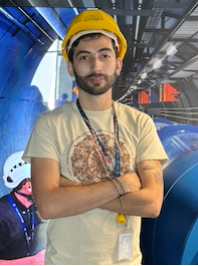 Wilson David Buitrago Ceballos
Wilson David Buitrago Ceballos
This email address is being protected from spambots. You need JavaScript enabled to view it.
Title: Polarized VBS WW Same-Sign Analysis for Run 3 of the CMS Experiment.
The aim of this research is to conduct a comprehensive analysis of the VBS WWSS process using data from Run 3 of the CMS experiment at the LHC. With an anticipated luminosity of up to 150 fb⁻¹, the increased dataset will enhance the precision of measurements and improve the identification of rare events, such as VBS WWSS, by optimizing signal extraction techniques and separating background processes more effectively.
To achieve these objectives, advanced machine learning algorithms will be employed to suppress background noise and increase signal purity. Key background contributions include Non-Prompt Leptons, which account for approximately 60% of the background, WZ production at 15%, and ZZ production. The analysis will also involve measuring the cross-section of the VBS WWSS process and comparing it with Standard Model (SM) predictions, providing an opportunity to validate the model or identify potential deviations.
In case of observed discrepancies with the SM, the data will be interpreted within the Effective Field Theory (EFT) framework. The additional data from Run 3 will enhance sensitivity to deviations by placing tighter constraints on Wilson coefficients, offering a more refined window into possible new physics phenomena. Moreover, the improved dataset will support global analyses of multiple processes involving Higgs, top quarks, and electroweak bosons, enabling the detection of subtle inconsistencies that could signify new physics. These developments represent a critical step toward advancing our understanding of fundamental interactions and exploring physics beyond the SM.
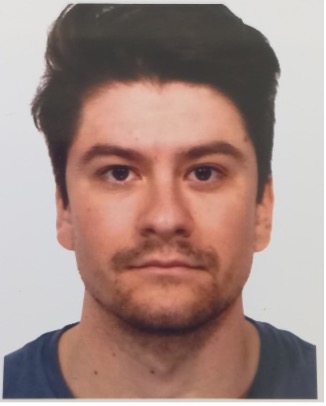 Tobia Matcovich
Tobia Matcovich
This email address is being protected from spambots. You need JavaScript enabled to view it.
Title: Study of Multimessenger Science Scenarios with CTAO and Gravitational Wave Interferometers
The main topic of my PhD project is to explore the merging events of disruptive binary objects from a multimessenger perspective, examining both Gravitational Wave (GW) emissions andtheir ElectroMagnetic (EM) counterparts. Specifically, I will delve into disruptive binary mergers,aiming to study the conditions that allow the simultaneous detection of gravitational wave signalsand the electromagnetic afterglow of the resulting Gamma-Ray Burst (GRB).Studying these astrophysical events is crucial. Currently, with the LIGO-Virgo-Kagra (LVK)interferometers, we have observed only a few of these objects and just one with its electromagneticcounterpart (Binary Neutron Star). However, next-generation instruments promise a significantadvancement in our observational capabilities. Future interferometers, such as the Einstein Telescope(ET) and the Cosmic Explorer (CE), are expected to detect between 104 and 105 NSBH andBNS-type mergers annually. This makes it essential to study the future observational conditionsand the physics that these upcoming data will reveal.Through the joint GW-EM analysis, I aim to enhance our predictions of the number of expectedmulti-messenger events based on different instruments (interferometers and telescopes). Inaddition, I will investigate how to improve observational strategies for the electromagnetic counterpartby considering several future telescopes, such as CTAO (Cherenkov Telescope Array Observstory), and the number of observed multimessenger events will depend on future follow-up techniques.
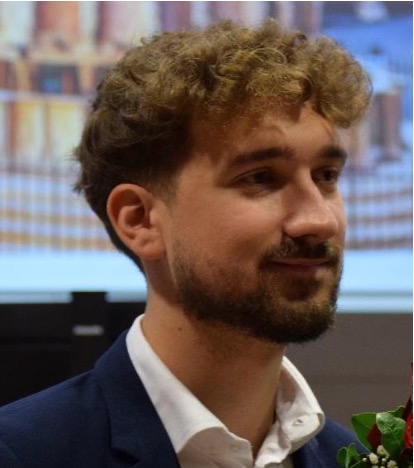 Davide Panella
Davide Panella
This email address is being protected from spambots. You need JavaScript enabled to view it.
Title: Astrophysical implications of strong gravity tidal effects on binary systems
The aim is to investigate the astrophysical implications of general relativity interactions between a supermassive black hole and binary systems of compact objects. These types of interactions can drive eccentricity of the binary system, affecting the gravitational wave signal, and accelerate mergers of the compact object. Previously the interactions have been found using only Newtonian or near-Newtonian physics. With the significantly increased precision in gravitational wave experiments in the coming decades, it is important to understand the full interactions. In particular, with the LISA experiment it is expected that one can observe binary systems for 6-12 months, instead of the current signals that last less than a second. So far, it has not been understood just how important strong gravity interactions between a supermassive black hole and a binary system is with such an enhanced window of observations.
 Andrea Radicchi
Andrea Radicchi
This email address is being protected from spambots. You need JavaScript enabled to view it.
Title: Sustainable carbon-based plastic composites and full recovery of raw materials, through only-green protocols.
The dispersion of small quantities of carbon microstructures (graphene, nanotubes, fibers) in polymers can significantly enhance their thermomechanical, electrical, and barrier properties, paving the way for advanced technical applications. Building on this concept, the project aims to develop innovative, eco-friendly protocols for producing carbon-based composites from industrial fossil-derived plastic waste, including mixed waste streams, with the goal of fully recovering raw materials in alignment with circular economy principles.
The project will focus on the most widely used plastics in the market. Research efforts will explore post-consumer valorization through selective chemical separation, followed by the production of high-value nanocomposites. These materials will be designed for recyclability, enabling non-destructive separation and recovery of their components.
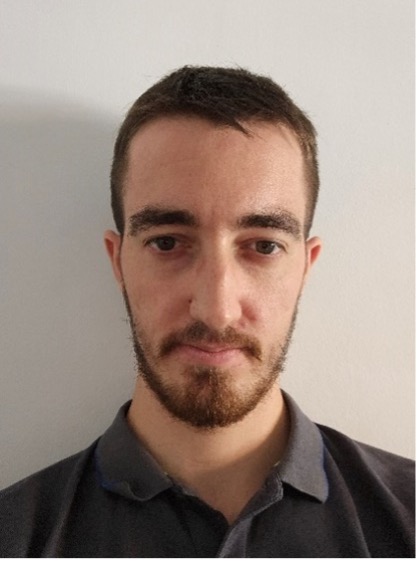 Lorenzo Tiberi
Lorenzo Tiberi
This email address is being protected from spambots. You need JavaScript enabled to view it.
Tittle: Effective Field theories for Beyond-Standard-Model physics.
In the future we will have the possibility to rely on experimental facilities as HL-LHC or FCC-e+ e- that could shed light on the new physics scenario and hopefully answer the open questions in the Standard Model (SM) such as baryogenesis, neutrino masses and EWSB mechanism. Our main goal task is to elaborate on the new models of particle physics that could be tested at these machines.
Since the SM is an astonishingly successsful framework it quite likely that signals from Beyond-SM (BSM) physics are really weak and consequently difficult to detect, under this assumption we make use of the EFT formalism to describe in a model independent way the effects of new physics. My personal research is focused on the formal EFT descriptions adopted in Higgs Physics (SMEFT and HEFT) seeking for scenarios where one of them is more appropriate than the other.
I’m interested in the phenomenology of BSM physics at the FCC and HL-LHC trying to include considerations from the DM scenarios.
XXXIX Cycle -ongoing
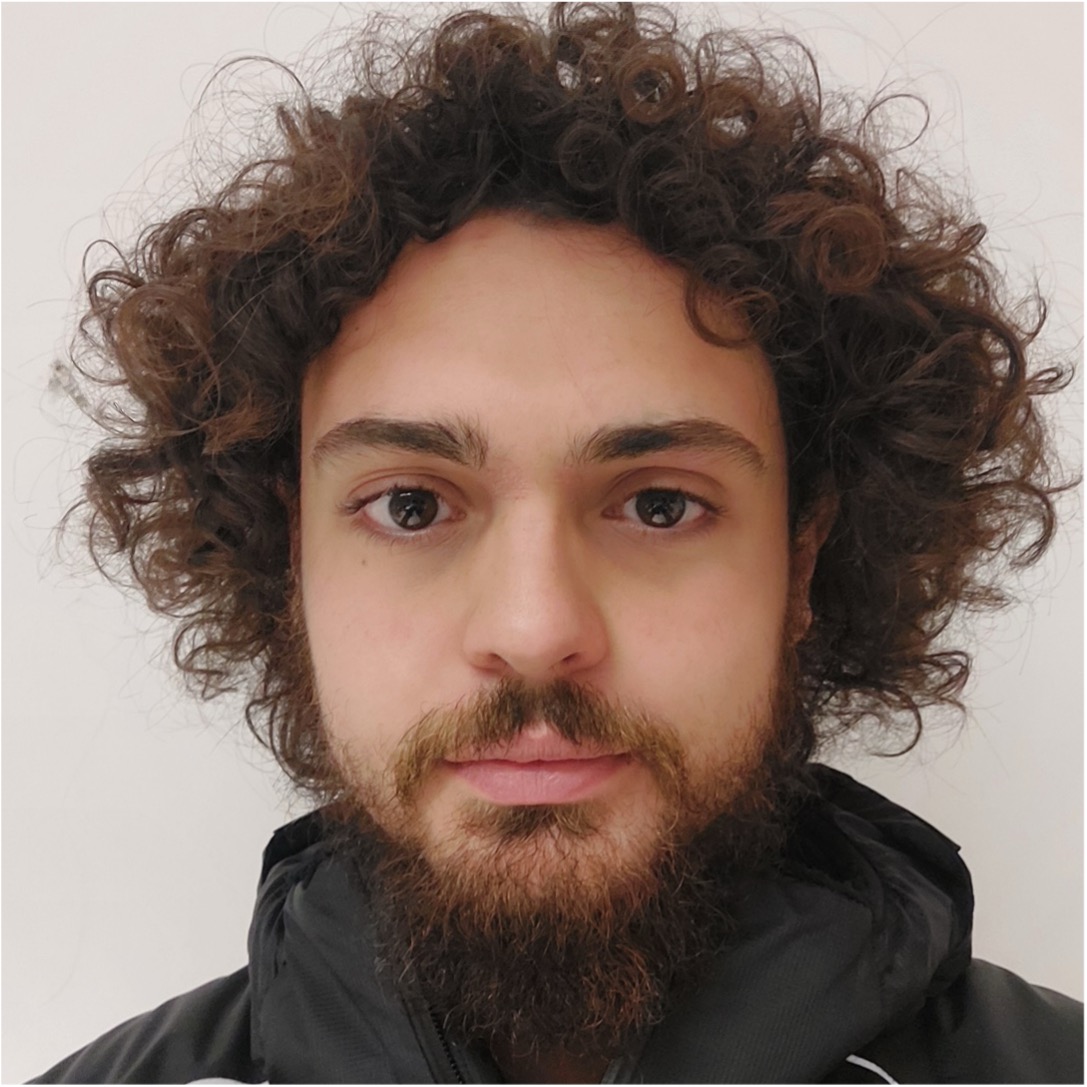 Francesco Casini
Francesco Casini
This email address is being protected from spambots. You need JavaScript enabled to view it.
Title: Enhancement of the scientific and outreach activities of the Coloti Observatory
The aim of my project is to develop the data analysis pipeline for the Borgo Coloti Observatory to enable the electromagnetic follow-up of multi-messenger transient objects and the study of the intra-night variability of blazars through the use of the optical telescope located at the observatory. As a part of my PhD project, I will also design and implement the observatory multi-messenger alert response software that will allow the observatory to react to multi-messenger alerts triggered by gravitational waves or neutrino events. The alert response system and the data anlalysis pipeline will allow to use the telescope to perform scientific activities and partecipate to multi-frequency and multi-messenger campaigns. To ensure fast and accurate response and data analysis, I will integrate machine learning techniques and algorithms into both the analysis pipeline and the observatory response system.
 Brigida Romano
Brigida Romano
This email address is being protected from spambots. You need JavaScript enabled to view it.
Title: Investigation of the interface between the plasma membrane and the extracellular matrix through surface-sensitive techniques.
The mammalian plasma membrane is a complex supramolecular structure composed of hundreds of different components. Its main structural elements are phospholipids, which self-assemble into a double-layered structure due to their amphiphilic nature. These lipids also play important biological roles, particularly through their interactions with other components of the body. For instance, the extracellular matrix is a complex network of proteins and polysaccharides that overlays cells, providing elasticity and strength to tissues and organs while also regulating several vital processes.
In studying these systems and their interactions, numerous variables must be monitored. My PhD project aims to optimize an in vitro model system that uses the minimal number of components required to remain biologically relevant. To characterize the validity and reproducibility of these models, I employ surface-sensitive techniques such as neutron reflectometry (NR), Quartz Crystal Microbalance with Dissipation monitoring (QCM-D), and Attenuated Total Reflectance Fourier Transform Infrared spectroscopy (ATR-FTIR). By combining the distinct perspectives offered by these techniques, I can obtain a detailed picture—accurate to within a few Å—of how the composition of these models influences both their structural and functional properties.
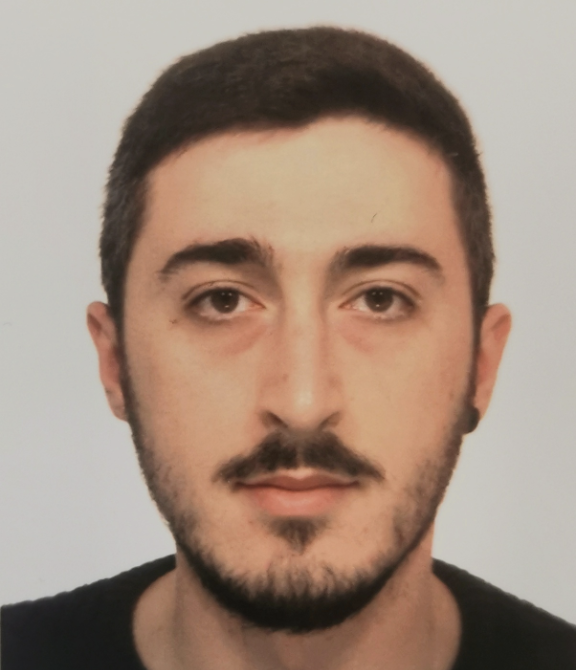 Carlo Calcatelli
Carlo Calcatelli
This email address is being protected from spambots. You need JavaScript enabled to view it.
Title: Growth and characterization of innovative materials for photovoltaics and ultra-low consumption electronics
The research project focuses on the growth and characterisation of innovative materials for photovoltaics and ultra-low consumption electronics. The physics of low-dimensional organic and inorganic materials (surfaces and thin films), e.g. phosphorene, thin films of organic molecules such as phthalocyanines, porphyrins, conjugated polymers will be studied.
An attempt will be made to establish and optimize growth protocols for these materials, using typical techniques of surface science (molecular beam epitaxy, MBE) in ultra-high vacuum (UHV) experimental chambers. Once grown on the substrate surfaces, the thin films will be characterized both morphologically, by means of Low-Energy Electron Diffraction (LEED) and Scanning Tunneling Microscopy (STM), and electronically, by means of spectroscopic techniques such as Ultraviolet Photoemission Spectroscopy (UPS), Inverse Photoemission Spectroscopy (IPES), Near-Edge X-ray Absorption Fine Structure (NEXAFS) spectroscopy.
In order to perform and master all the above mentioned techniques, I will work in the “Laboratorio Congiunto di Fisica delle superfici e delle nanostrutture” of this physics department and collaborations with international research groups will be required, as well as beamtimes at different European Synchrotrons facilities.
 Marta Cocco
Marta Cocco
This email address is being protected from spambots. You need JavaScript enabled to view it.
Title: Tidal deformations in hierarchical 3-body systems
Tidal interactions play a crucial role in various astrophysical systems, leaving their mark across the cosmos. In the context of gravitational wave (GW) astronomy, tests of fundamental physics and strong field gravity, tidal effects are precious. Indeed, it has recently been demonstrated that tidal effects can have consequences on gravitational waves emitted by binary systems in the late stages of their orbital evolution, which are potentially measurable by the upcoming generation of GW detectors, i.e. LISA and ET.
All this has increased the importance of analytical research into new types of strong gravitational phenomena in preparation for future experimental breakthroughs.
In this context, the aim of this research project is to study the effects of the tidal environment on the dynamics of black hole binary systems, which are among the most promising sources of gravitational waves, in various situations. This includes the study of several types of resonances such as tidal resonances and, for example, precession resonances, with the goal of understanding what is their impact on the gravitational wave signal emitted by such binary systems. As explained, this is relevant to measurements of gravitational waves by the LISA and ET detectors
 Nicolò Baldicchi
Nicolò Baldicchi
This email address is being protected from spambots. You need JavaScript enabled to view it.
Title: Future gravitational waves detectors noise studies with CAOS
The doctoral activity will concern the analysis of the main noises that limit the sensitivity of present (Virgo, Ligo and Kagra) and future (Einstein Telescope) interferometric Gravitational Waves detectors, such as quantum noises like Photon Shot Noise and Radiation Pressure Noise, and non-quantum noises such as thermal and the seismic one. The aim of the project will be to calculate the sensitivity curve of the international CAOS laboratory (Centro per Applicazioni sulle Onde gravitazionali e la Sismologia), thus defining its Signal-to-Noise Ratio curve as a function of the frequency of the gravitational wave signal.
The CAOS laboratory will be built in Perugia in these years, and will allow the prototyping of Einstein Telescope suspensions on a 1:1 scale.
An important impact will be related to the possible applications deriving from a laboratory with the characteristics of CAOS, such as those in the seismology field, in earthquake prediction techniques and technologies
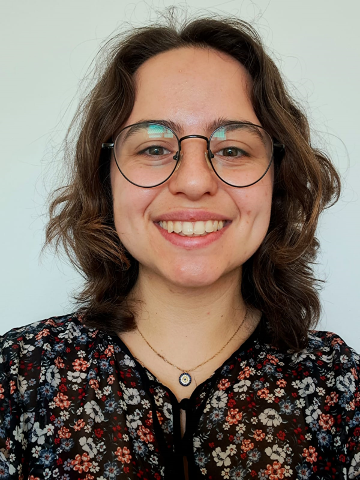 Elisa Grilli
Elisa Grilli
Title: Memory contributions in the Effective One Body model
Since the first detection of gravitational waves in 2015 and thanks to subsequent signals cataloged by the LIGO/VIRGO/KAGRA collaboration, our understanding of these phenomena and their sources has significantly expanded. New experiments, such as LISA and the Einstein Telescope, are designed to become operational in the coming years, making it increasingly necessary to have theoretical and analytical models on which to base the data analyses from new instrumentations.
The aim of my project is to incorporate in the effective one-body description of binary black hole systems the dependence on memory contributions. The memory terms constitute an important piece of information in the gravitational wave signal. This is relevant to measurements of gravitational waves by LIGO/VIRGO/KAGRA and for future detectors.
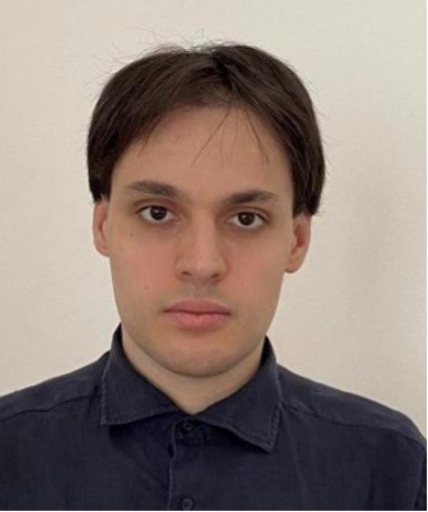 Rocco Malaspina
Rocco Malaspina
This email address is being protected from spambots. You need JavaScript enabled to view it.
Title: Polymer physics for bacterial detection and elimination and Low Earth Orbit
Descrizione: "Space missions in Low Earth Orbit (LEO) induce several biological and technical difficulties to the crew during their permanance; one of them is biofouling, i.e. the formation of bacterial colonization on surfaces in the form of biofilms. Prevent biofouling is of critical importance for both the correct execution of the missions, since biofilms can corrode metallic components potentially causing dysfunctioning and faults of the apparatus located in orbit, and the health of astronauts, since biofilms form particularly on surfaces in direct contact with water. Also, biofilm formation shows an accelerated growth rate and increased virulence in microgravity conditions.
Among all the efforts made to control biofouling, multifunctional hydrogels can have a pivotal role in this regard. Hydrogels are relatively cheap and easy to produce, they can be fabricated through 3D printing in different forms and geometris, can have self-healing and anti-bacterial properties when mixed with nanomaterials.
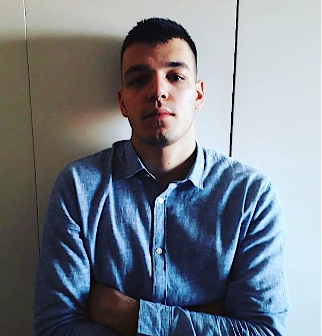 David Pelosi
David Pelosi
Title: Phenomenological study of energetic charged radiation in space
The proposed research focuses on investigating energetic charged radiation in space, ranging from the near-Earth environment to the interplanetary and interstellar medium. Beyond Earth's atmosphere, this radiation consists mainly of galactic cosmic rays (CRs), solar particles, and trapped particles in planetary magnetospheres.
As these particles travel through the heliosphere, influenced by the solar wind and magnetic field, their interactions undergo changes shaped by the 11-year solar cycle, known as solar modulation. Recent decades have seen the development of a theoretical framework for CR transport in the heliosphere, thanks to abundant data from space observations.
An intriguing aspect is the modulation's dependence on particle charge, leading to asymmetries in matter and antimatter CR fluxes. These effects result from drift processes across the interplanetary magnetic field, which reverses every 11 years.
Understanding solar modulation is crucial for identifying CR sources, studying their interactions, and exploring new physics in antimatter fluxes. With the growing interest in space exploration, this research aims to create a data-driven model describing the evolution of CR fluxes in response to changing solar activity. Beyond its importance in solar and astroparticle physics, this understanding contributes to modeling space weather effects, crucial for missions, satellite communications, and space operations.
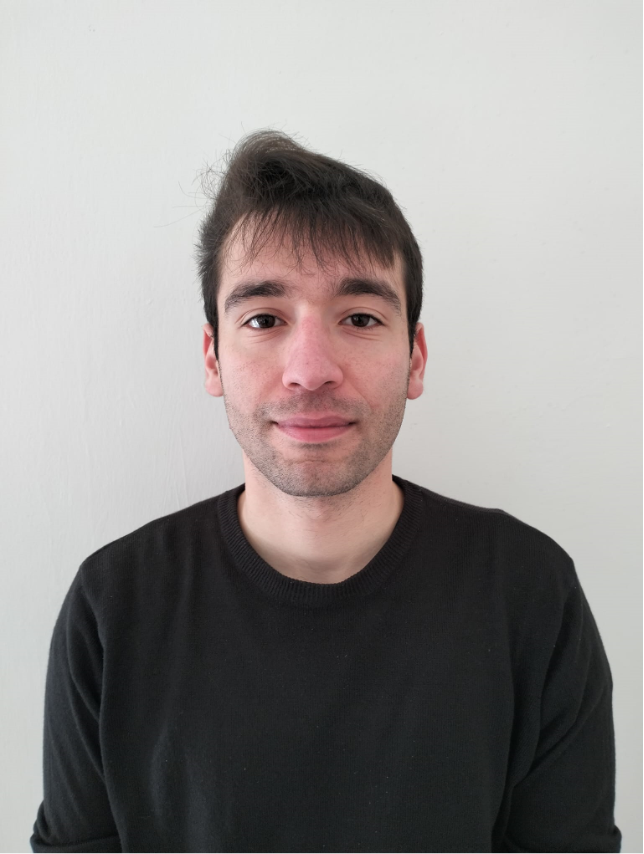 Luca della Penna
Luca della Penna
This email address is being protected from spambots. You need JavaScript enabled to view it.
Titolo: Study of polarization state of vector bosons in VBS processes at CMS experiment
Vector Boson Scattering (VBS) is one of the most interesting processes occurring at the LHC, a rare process foreseen by the Standard Model of particle physics that can act as a probe to test the electroweak sector. In this context, the presence of the Higgs boson in such processes leads to the cancellation of divergences in the cross section, preserving unitarity. Since the W and Z bosons are massive, they can have both transverse (T) and longitudinal (L) polarization. As a consequence, the extrapolation of VBS cross-section identifyng the three possible polarization states of the two gauge vector bosons (TT, LT, LL) provides a more stringent test for Standard Model predictions. Among these possibilities, the longitudinal polarization is the one that could be sensitive to Beyond Standard Model effect.
In my research project, the focus will be on the development of tools aimed at reconstructing the polarization of the gauge bosons that interact through VBS, starting from their leptonic decay products. Subsequently, attention will shift to the analysis of Run II and Run III (which started in 2022) CMS data, testing VBS processes with a hadronic tau in the final state.
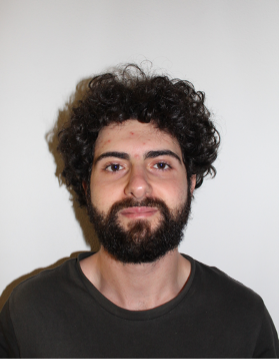 Francesco Rosini
Francesco Rosini
This email address is being protected from spambots. You need JavaScript enabled to view it.
Title: Phenomenology of the BBbar couples production in e +e − annihilation process
In the last years, the BESIII Collaboration has shed light on the timelike electromagnetic nucleon form factors (EMFFs) in the non perturbative region. The data have shown an oscillating behaviour over the energy range 2.0 - 3.2 GeV, once the classic dipole behhaviour has been subtracted. At the moment it is unknown whether these oscillations come from a final state interaction or are intrinsic to the nucleons’ internal structure and hence encoded by the EMFFs. We will try to find a microscopic phenomenological model capable of describing these oscillations, as effects due to the interference of different complex amplitudes.
In order to reach our purpose, we will work in the light front framework, expanding the three quark matrix element using the light cone distribution amplitudes formalism, evaluating diagrams up to the next to leading order, giving particular relevance to the J/ψ intermediate state, which produces the BB¯ pair mostly via a three gluon interaction. By doing so, we will be able to evaluate separately the electric and magnetic form factors, as well as their ratio. This permits to evaluate the angular distribution of the BB¯ pairs produced from the e +e − annihilation process.
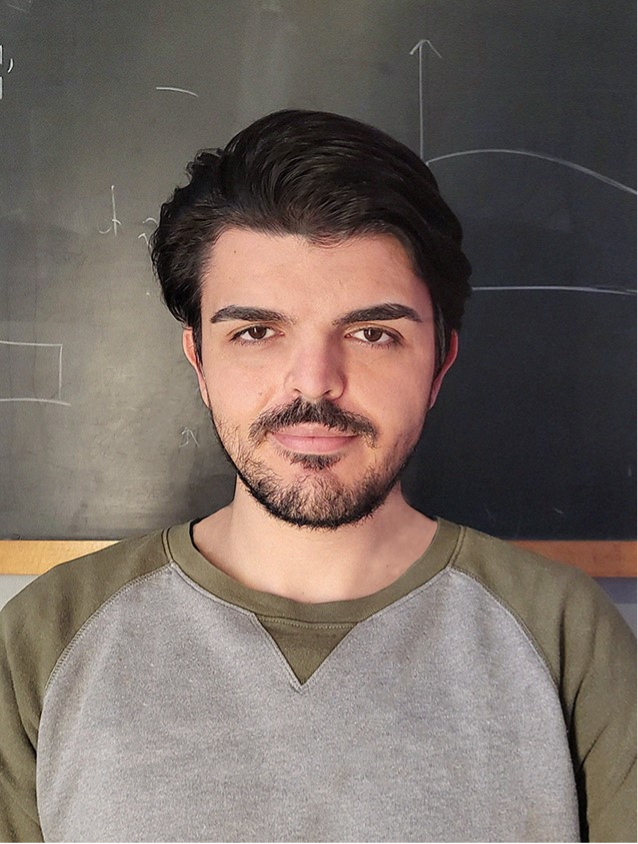 Mattia Trapella
Mattia Trapella
This email address is being protected from spambots. You need JavaScript enabled to view it.
Title: Study of long human Telomere sequences through Coarse-Grained simulation
In the field of medical advances, the search for effective anticancer targets is at the center of attention. Cancer cells, known for their rapid proliferation, boast an abundance of telomerase, an enzyme critical in prolonging the life of the cell through the maintenance of telomeres. Enter G-quadruplexes (G4s), unique DNA structures with a lot of potential as anticancer agents. These structures, when bound to telomeres, prevent the action of the polymerase, effectively stopping cell proliferation. However, the instability of the G-Quadruplex-telomere connection drives the search for stabilizing ligands, which guarantee prolonged inhibitory effects on telomerase.
To address this challenge, my PhD project involves developing Monte Carlo Coarse-Grained simulations, combined with experimental results, to predict and analyze filament formation and the response to ligand addition. Specifically, my initial work aims to examine the impact of the cationic porphyrin ligand TMPyP4 on G4s stability carrying out computational simulations. In the aftermath, the simulation model will undergo refinement and optimization procedures, thereby augmenting its applicability into diverse scientific research domains.
 Alessio Ubaldi
Alessio Ubaldi
This email address is being protected from spambots. You need JavaScript enabled to view it.
Title: Analysis and scientific exploitation of data from the AMS-02 mission
The AMS-02 experiment will continue to acquire data until the end of the ISS mission, currently planned for 2030. By the end of 2025 the AMS-02 mission will be subject to an upgrade, called Layer 0 (L0), which involves the installation of two new silicon planes on top of the apparatus. The upgrade will increase AMS-02’s acceptance by a factor of 3, allowing to perform new measurements for high-Z cosmic ray (CR) nuclei up to the TeV region, providing the foundation for a comprehensive theory of CRs.
My work will focus on both the characterization of the silicon micro-strip sensors that will be mounted on the new planes, and the study of the solar modulation of temporal fluxes of Boron, Carbon and Oxygen. Thanks to the upgrade it will be possible to both analyze the temporal fluxes on a monthly scale, in relation with the solar cycle, and on a daily scale by investigating the solar modulation caused by events that last days, such as solar flares.
XXXVIII Cycle - ongoing
 Maria Elena Ascioti
Maria Elena Ascioti
This email address is being protected from spambots. You need JavaScript enabled to view it.
Title: Study of charmed mesons as a probe for Triple Parton Scattering at CMS Topic:
Multi Parton Interactions (MPI) are studied with an eye to the past and one to the future, aiming for a better classification of the processes in hadron interactions and to improve the understanding of the hadron structure. In the overall pictures of MPI studies, my work as a PhD student represents a novel study for both open charmed mesons and charmed quarkonia as a probe for Triple Parton Scattering (TPS) at the Compact Muon Solenoid (CMS) experiment.
I will analyze the Run II (and possibly Run III) data in search of final states with a double J/Psi plus a D* mesons, aiming to understand if the events have been produced via Single, Double or Triple Parton Scattering (SPS, DPS and TPS). In a second moment, we expect to characterize the events in terms of their kinematics and correlation relationships. These pieces of information might give crucial clues to improve the theory behind the MPIs and the understanding of the mechanisms that govern them.
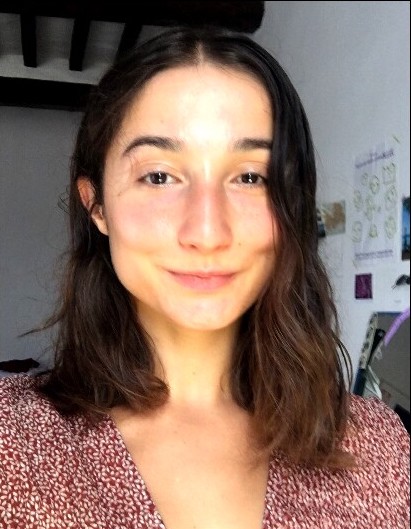 Maria Lisa Brozzetti
Maria Lisa Brozzetti
This email address is being protected from spambots. You need JavaScript enabled to view it.
Title: Evaluation of catalogues completeness in the Virtual Observatory framework to estimate the Hubble constant
The vision of the Universe and the insight of astrophysical phenomena are moving forward significant progress thanks to multi-messenger astronomy, using several "messengers". It is thereby necessary a synergetic work between all the different detectors working for astronomical and cosmological purposes.
The first multi-messenger event in "light and gravity", was triggerd by the gravitational wave GW170817 which was the first 'standard siren', getting the Hubble constant value with redshift information from the host galaxy. Indeed, it is possible to derive the cosmological parameters of gravitational events: especially, we will focus on the estimation of rate expansion of the Universe using events without an electromagnetic counterpart. GW events are possible candidates to resolve the discrepancy between results obtained studying the Hubble flow at early-time and late-time Universe with different strategies as known as Hubble tension.
This project will deal with the caracterization of the incompleteness of astronomical catalogues for cosmological applications and to maximize the performance of follow-up campaigns, reducing the number of pointings during the future starting run of LIGO- Virgo-Kagra interferometers.
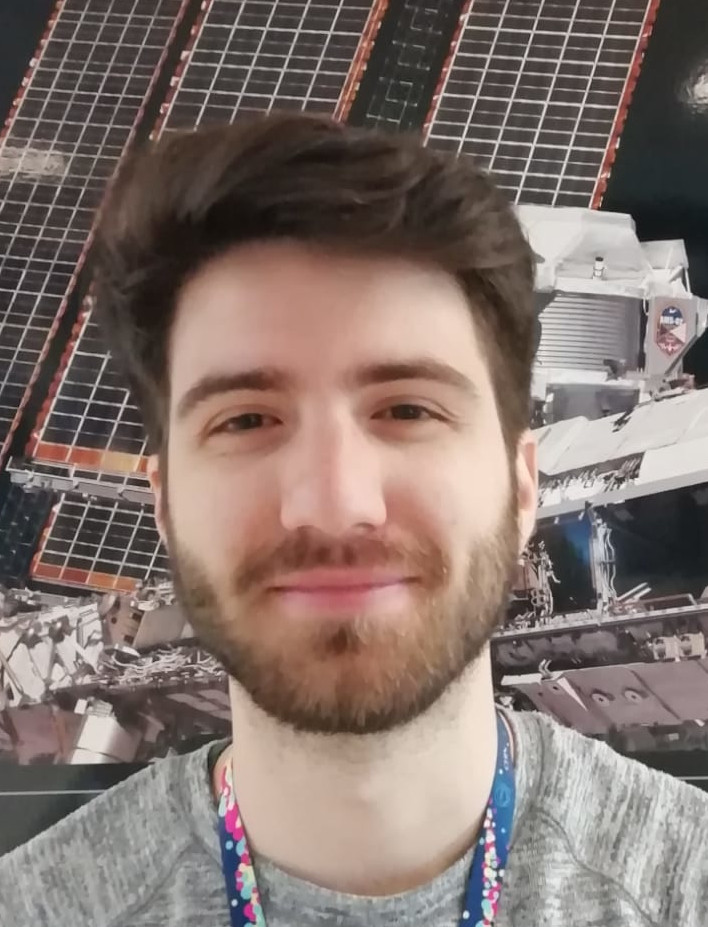 Claudio Brugnoni
Claudio Brugnoni
This email address is being protected from spambots. You need JavaScript enabled to view it.
Title: Study of electron and positron in HERD experiment
The High Energy cosmic-Radiation Detection (HERD) is a developing spaceborne facility for direct measurement of cosmic rays, which is planned to start operating around 2026 for about 10 years. Featuring an unprecedented acceptance (> 1 m2sr) and an advanced 3D segmentated isotrope calorimeter with elevated depth (55 X0) HERD will be able to extend our knowledge of cosmic rays spectra up to 10 times the actual limit for direct detection.
My work in the HERD collaboration will focus on the development of analysis and reconstruction tools for the tracking of events, particle identification and optimization of algorithms. This results will be achieved through implementation and optimization of both traditional and machine learning algorithms.
Part of the work will also feature acquisition of experimental data from the beam test on the new hardware in order to accurately calibrate the developing simulation and analysis tool.
 Costanza Carrivale
Costanza Carrivale
This email address is being protected from spambots. You need JavaScript enabled to view it.
Title: “Standard Model Effective Field Theory interpretation of Vector Boson Scattering global combination with CMS”
The Standard Model Effective Field Theory (SMEFT) allows for the description of the effects of a variety of theories beyond the Standard Model (SM) that introduce new physics states at a mass scale large compared to the electroweak scale. The theory provides predictions for experimental observables using a set of new operators with an energy dimension greater than 4. Measurements of observables sensitive to the effect of new operators allow setting constraints on SMEFT parameters.
Vector Boson Scattering processes provide an ideal field for studying possible deviations from SM since they present interactions through both triple and quartic vertices and given their close link with the EWBS mechanism. Thanks to the integrated Run II Luminosity, VBS measurements are quickly populating the experimental landscape of SM measurements. Global fits are a powerful tool to enhance SMEFT sensitivity and loosen assumptions: given the high interdependence between channels, it becomes essential to set up a combination of different final states to better constrain EFT parameters that affect VBS processes.
My project aims to provide global constraints on Wilson coefficients in a combined fit of measurements of VBS channels at the CMS experiment. The starting point for this work will be the SM combination of VBS analyses developed in Run II of LHC. Compared to the SM case, the SMEFT model introduces many new parameters, therefore during the project the Combine-based model for the combination of VBS analyses will be integrated: correlations between EFT parameters in different VBS channels will be explored and a prescription for their treatment will be outlined and implemented. In last part of the work will be studied how the combination of different channels improves the constraints on EFT degrees of freedom.
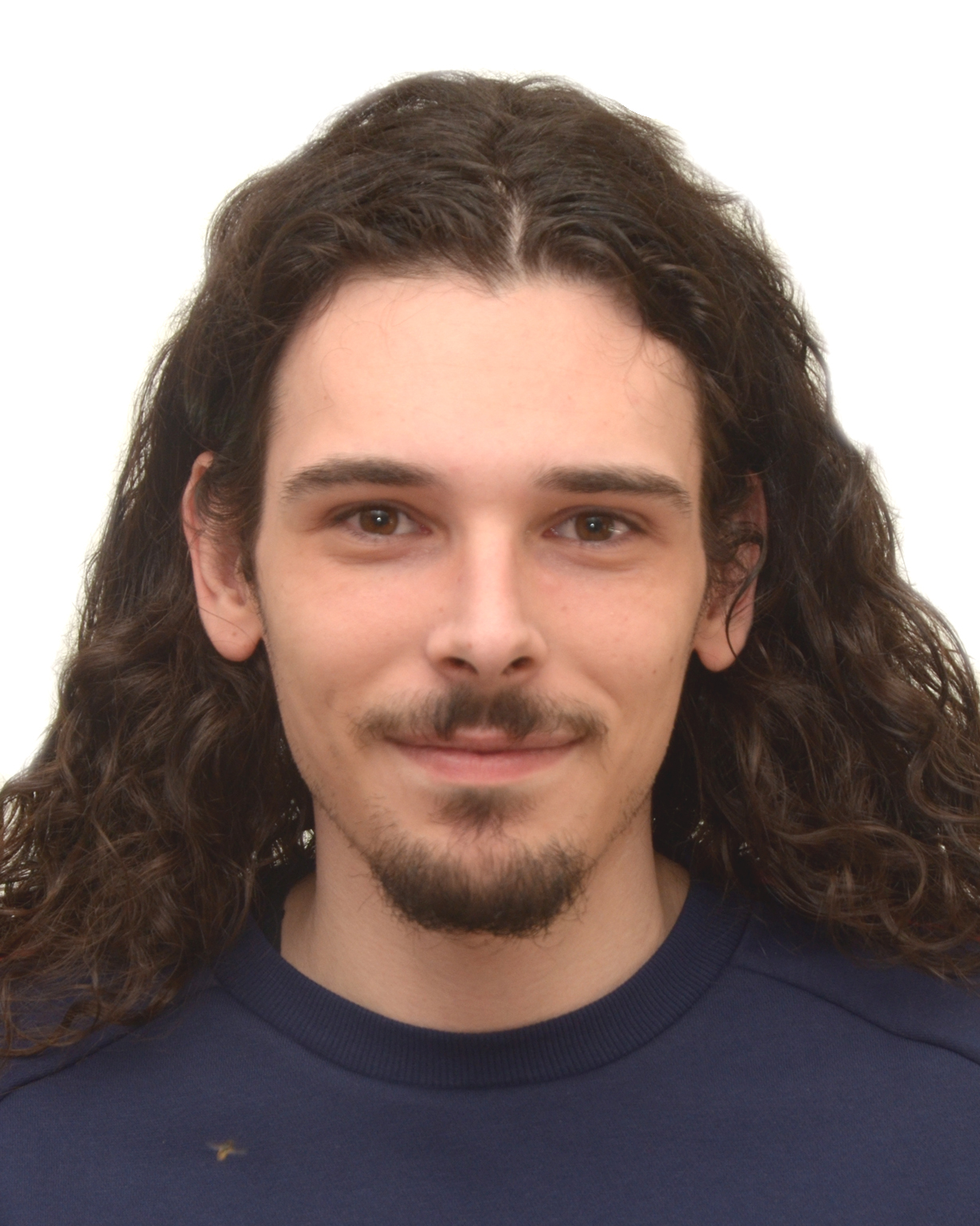
This email address is being protected from spambots. You need JavaScript enabled to view it.
Title: OPTIQUAL (OPTImization Quantum Algorithms: from fundamental Physics to applications of general interest)
The aim of the project is to develop quantum computing technologies and to promote their use. In facts, some of these technologies are already applied in commercial devices, in principle accessible to public and private companies, but they are not properly exploited due to lack of information or expertise.
Initially, use will be made of a D-wave quantum annealer, which can read algorithms in the QUBO (Quantum Uncostrained Binary Optimization) form, in order to refine the algorithm for the GEVP (Generalized EigenValue Problem), developed for an international project coordinated in Perugia, approved by Q@TN (INFN-UNITN-FBK-CNR). The algorithm is exploitable for the description of relativistic bound states through the Bethe-Salpeter equation. During my PHD I will study other Quantum Computers, based on different quantum technology (multipurpose QC, gate oriented,...), to solve other problems arising in nuclear and subnuclear physics. Then, in collaboration with the partner company, the algorithms will be adapted in an hybrid conventional-quantum algorithm to solve optimization problems relevant in logistics.
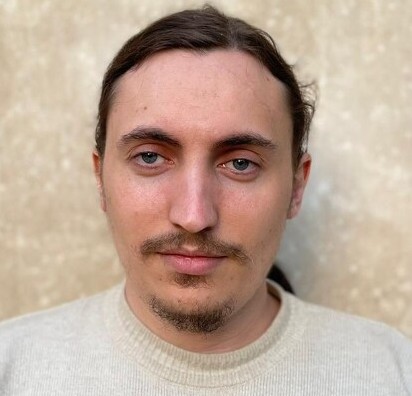 Valentin Daniel Paccoia
Valentin Daniel Paccoia
This email address is being protected from spambots. You need JavaScript enabled to view it.
Title: Environmental monitoring by remote sensing and by a network of energetically autonomous ground sensors
Wireless sensor networks play a crucial role in environmental monitoring to prevent catastrophic events. In the last few years, drones have been considered to complement the data traditional ground sensors can obtain. Drones could also reduce the energy cost of data transfer and the system's vulnerability to losing one of the nodes. Therefore, realizing an integrated system combining sensors and drones is fundamental.
The aim of my project is the physical realization of a wireless sensor network model consisting of two elements: a terrestrial node and a drone. The network must have data collection capabilities, effective short-range communication and energy autonomy. Energy harvesting systems connected to the terrestrial node and bidirectional energy transfer between the drone and the land node will guarantee the power supply. Furthermore, I will apply machine learning techniques to analyze the collected data.
I will perform a case study on the use of the system for monitoring volcanic activity. This application's requirements will guide the design choices for the sensors and the energy harvesting devices.
 Lucia Salvi
Lucia Salvi
This email address is being protected from spambots. You need JavaScript enabled to view it.
Title: Radiation Interactions Simulator development and testing for Aerospace and Terrestrial Applications
The aim of MRADSIM project consists in creating an innovative software in order to study the radiation effects in all possible applications. In this project a modern and intuitive graphic interface will be created thanks to which it will be possible to simulate the radiation effects on the electronic and electromechanical devices. MRADSIM-CONV can convert the STEP format into GDML format, in order to automatically transcribe the geometry in the GEANT4. The result can be used to simulate the radiation effects in all parts of the converted geometry. During this project algorithms will be created and optimized for operation through a combination of CPU and GPU, in the management of the MRADSIM software as a whole, with division of the software into modules, management of the different versions and the distribution process of the software, and finally in the creation and management of a cloud system with servers containing the MRADSIM software.
The applications of this software are: aerospace industry; medical centers for radiotherapy; research centers and particle accelerators; sustainable energy plants; study of biological samples (DNA) exposed to radiation.
XXXVII cycle - ongoing
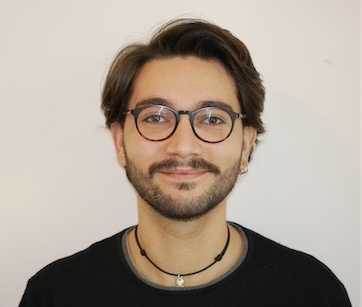 Mattia Bassotti
Mattia Bassotti
This email address is being protected from spambots. You need JavaScript enabled to view it.t
Title: Novel two-dimensional materials: growth and characterization of thin films for photovoltaics and ultra-low consumption electronics.
The research project will deal with the physics of two-dimensional materials (2DM), in view of their application in the fields of photovoltaics and ultra-low consumption electronics. A first objective is to optimize the growth parameters for the deposition of thin films of novel 2DMs (such as porphyrin, perovskites or dichalcogenide) through evaporation techniques available at the “Laboratorio Congiunto Superfici e Nanostrutture”, where the experimental chamber ACROSS is present. Structural engineering as well as interactions with the substrates will also be considered as tuning factors in improving the films performance.
Along with this, the research will focus on the characterization of deposited films. Structural and crystal properties of the samples will be investigated by means of Atomic Force Microscopy (AFM), Low-Energy Electron Diffraction (LEED) and Auger Electron Spectroscopy (AES) while the opto-electronic properties will be studied using, for example, Inverse Photoemission Spectroscopy (IPES) and Ultraviolet Photoelectron Spectroscopy (UPS).
The period of internship at the company will be managed in order to identify the materials that appear to be more promising and easily scalable at the industrial level and to optimize the growth processes.
 Giulio Bianchini
Giulio Bianchini
This email address is being protected from spambots. You need JavaScript enabled to view it.
Title: "Development of Solutions for Efficient FPGA-based computing architectures generation"
Field Programmable Gate Arrays (FPGAs) are playing an increasingly important role in the data sampling and processing industry thanks to their highly parallel architecture, low power consumption and the flexibility of using custom algorithms. In particular, in the field of artificial intelligence, for the training and implementation of neural networks and machine learning algorithms, energy-efficient hardware and massive parallel processing capacity are in great demand. At the software level, programming in an FPGA environment is possible thanks to tools that provide a "firmware-agnostic" abstraction layer of multiple backends, from the proprietary Xilinx / Intel ones to the more generic and flexible ones such as BondMachine (BM), a reconfigurable computing system that uses the FPGA to create a highly specialized parallelizable architecture to solve a specific task. The aim of the project is to enable the integration of a neural network (DNN) on FPGA, starting from training up to its production in order to be subsequently used for data processing by developing open source software, for example evolving and extending tools such as the BM. The system will be accessible to the end user through GUI and will support automatic FPGA provisioning according to the cloud paradigm. The expected results include the realization of a system that allows the use of standard neural network models that can be integrated on FPGA using BM and the possibility of using, through cloud services, a registry of neural network models that will be pre-trained to perform a specific task.
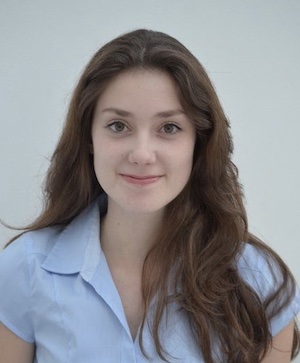 Beatrice Caviglia
Beatrice Caviglia
This email address is being protected from spambots. You need JavaScript enabled to view it.
Title: Arrest of the Proteome dynamics at the cell death temperature
Proteins can be physically seen as a marginally stable soft-matter entity, meaning that upon thermal stress they partially or completely lose their structure. The unfolding of either the whole proteome or a small set of proteins is thought to be the cause of cell death. The dynamics inside a cell can be studied as a proxy to monitor cell death. For instance, proteins live in a crowded space where the unfolding of a small set of proteins might affect the physical properties of the cytoplasm, impacting on the dynamics of the functional processes. Moreover, proteins perform local structural fluctuations. The excess of vibrational motion might lead to the melting of the proteome, in a like-wise Lindemann-criterion.
The goal of this project is to investigate the link between proteome structure and dynamics and cell death by combining Neutron scattering experiments and Molecular dynamics simulations.Different types of bacteria will be explored to correlate the stability of these microorganisms with the proteome dynamics at different temperatures.The work will investigated whether a small set of proteins triggers cell death and how the unfolding of a limited number of proteins can intact the cell functionality.
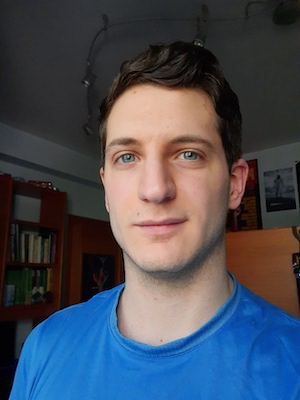 Paolo Cristarella Orestano
Paolo Cristarella Orestano
This email address is being protected from spambots. You need JavaScript enabled to view it.
Title: "Temporal studies of transient sources in multi-messenger and multi-wavelength Astronomy through the Coloti optical observatory"
The aim of this research project is to develop a strategy for electromagnetic follow-up through the use of the optical telescope located at the observatory of Borgo Coloti, also by making it usable remotely. This will allow the Coloti observatory to follow multi-messenger transient objects, such as the sources of gravitational waves detected by ground interferometers (i.e. LIGO, VIRGO), hence partecipate to GRAWITA, a national scientific network consisting of infrastructures and observatories following multi-messenger events. Furthermore, with the remote control of the observatory we can extend the work of the telescope also for multifrequency observation campaigns of X-ray and gamma-ray sources discovered by satellite instruments.
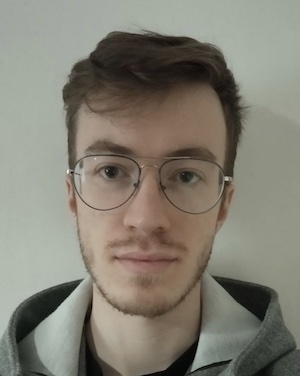 Francesco Faldi
Francesco Faldi
This email address is being protected from spambots. You need JavaScript enabled to view it.
Title: Study of the temporal evolution of charged cosmic ray fluxes on the short term scale in relation to solar energetic events
The aim of my project is to investigate the characteristics of transient and energetic phenomena that occasionally occur on the Sun, such as Coronal Mass Ejections and Solar Flares, analysing the charged particles' flux produced in these events. This investigation consists in measuring the main properties of the solar charged radiation, such as the energetic spectrum, chemical composition and temporal variability. The main objectives are:
- characterization of the temporal evolution of cosmic rays fluxes on quiet periods, during solar events and on subsequent phases.
- reconstruction of the solar component of the energetic spectra during such events with the emission of highly energetic solar particles.
- analysis of possible correlations between charged particles' fluxes and other indicators of solar activity or geomagnetic disturbance in correspondence of solar events (e.g solar wind velocity, intensity and polarity of the Interplanetary Magnetic Field, solar irradiance, indexes of geomagnetic disturbance).
All the measurements involved in this study will be retrieved from astroparticle experiments such as AMS-02 and CALET and from solar observatories such as the Wilcox Solar Observatory or the Solar Orbiter.
 Lisa Fantini
Lisa Fantini
This email address is being protected from spambots. You need JavaScript enabled to view it.
Title: Study of rare B mesons decays at LHCb
During my PhD I will work within the LHCb group in Perugia. The main topic of my activity and thesis will be the search for signals of new physics beyond the Standard Model (SM). These signals are searched in the rare decays of B mesons with data collected by LHCb experiment at CERN. I will take an active part in the new LHCb data collection period, starting in 2022. I will participate in data taking shifts and service assignments resulting from the Perugia group responsibilities within the collaboration. I will also take part in the research and development activities for future upgrades of the RICH detectors of LHCb undertaken in Perugia, such as the study of new sensors and related readout electronics.
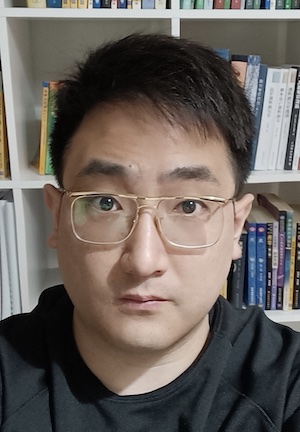 Jiang Yaozu
Jiang Yaozu
This email address is being protected from spambots. You need JavaScript enabled to view it.
Title: The Tracking System of HERD
The High Energy cosmic-Radiation Detection (HERD) facility is one of several space astronomy payloads of the cosmic light house program onboard China’s Space Station, which is planned for operation starting around 2026 for about 10 years. The main scientific objectives of HERD are indirect dark matter searches with an unprecedented acceptance (> 1 m2sr), precise cosmic ray spectrum and composition measurements up to the knee energy(1 PeV), and gamma-ray monitoring and surveys (from 500 MeV up to 10 TeV). In the prototype phase, the HERD consists of 5 sub-detectors, from inside to outside is : 3-D cubic calorimeter (CALO),scintillating fiber tracker (FIT), microstrip silicon trackers (SCD), plastic scintillator detector (PSD), then a transition radiation detector (TRD) is located on the lateral side.
My work mainly contains those parts : the estimation of CALO and SCD parameters (the acceptance, efficiency, energy resolution, charge resolution and spatial resolution), the optimization of the Monte Carlo, so that the simulation is as close as possible to the data, the definition/implementation of the calibrating procedures and the analysis strategies .
 Maria Enrica Mazzella
Maria Enrica Mazzella
This email address is being protected from spambots. You need JavaScript enabled to view it.
Title: "Development of innovative Data Science tools for touristic applications"
A data-science project is proposed in order to develop predictive analysis tools on urban tourist flows. The starting database is represented by georeferenced points of interest that populate the tourist access application developed by the SME Int.Geo.Mod. srl. The system is based on the proprietary By-Way ™ technology platform, which creates multisensor apps (AR-iBeacon-WiFi), already applied by the company in numerous contexts. By crossing the georeferenced data, the frequency of use and the profile data, it will be possible to create the extended reference database for a high-level analysis capable of interpreting tourist flows on a predictive basis. It will therefore be possible to create specific metrics that can direct flows according to external constraints such as, degree of accessibility of the particular point of interest, level of crowding, specificity of the user, events of particular interest or other. Through the semiotic analysis of user profiles with predictive data-science tools (learning models based on neural networks, the so-called "machine learning") we intend to study the unexpressed tourist potential in order to enhance the marketing strategies of a place or a particular point of interest, even on a personalized basis.
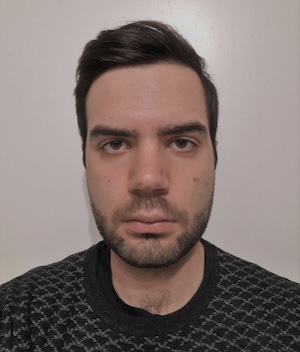 Francesco Millucci
Francesco Millucci
This email address is being protected from spambots. You need JavaScript enabled to view it.
Title: Biophysical route to optimize the function of a novel enzyme for PET degradation
The discovery of a new leaf-branch compost cutinase variant (e-LCC), optimized for the efficient depolymerization of PET, has recently been reported. With a 90% degradation yield of PET waste reached in less than 10 hour, enzymatic recycling might now be regarded as a viable way to meet our sustainability goals.
The aim of the project is to provide the biophysical basis to:
(i) Improve the performances of e-LCC with respect to working temperture, thermal stability and catalytic efficiency
(ii) Develop a novel biosensor for microplastic detection
To these purposes the structural and dynamical properties of the enzyme, along with the interactions established with PET, will be characterized in the presence of variable environment conditions ( i.e. changing cosolvents, pH, ionic strength etc...).
Both computational methods (molecular docking and molecular dynamics, in collaboration with Molecular Horizon srl) and spectroscopic techniques (such as FTIR, Raman, neutron scattering etc...) will be employed.
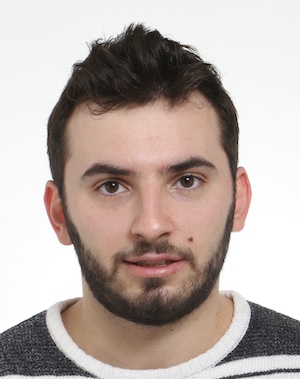 Gabriele Perna
Gabriele Perna
This email address is being protected from spambots. You need JavaScript enabled to view it.
Title: Study of Pb-free micro- and nano- structured piezoelectric materials for energy harvesting applications
The micro- and nano- piezoelectric structures are of great interest for the implementation of micro systems of energy harvesting by means of mechanical vibrations. They transform any mechanical stress in electric energy which in turn can be stored in batteries or directly used for the power supply of wireless devices. Among the main materials we find the PZT, or lead zirconate titanate, a piezoelectric ceramic with a high energy conversion gain. However, this material is pollutant, toxic and not biocompatible as it contains lead.
The aim of my PhD research project is to select and synthesize chemically materials which can be a valid alternative to PZT, such as zinc oxide (ZnO), barium titanate (BTO) and KNN, or sodium potassium niobate and which have biocompatible characteristics, good piezoelectric performances and a low cost. They will be also characterized depending on their properties, measuring directly the piezoelectric coefficient of a single crystal, not a simple task but with results of strong relevance for the scientific community, not being present in literature yet.
Finally, will be realized a device based on the use of 10 micron crystals displayed as an array of pillars or ribbons, which potentially will have an energy conversion gain that increases in an order of magnitude, with the possibility of applying this idea and technology to an industrial setting.
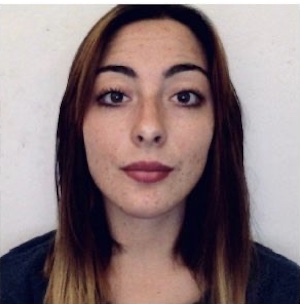 Francesca Peverini
Francesca Peverini
This email address is being protected from spambots. You need JavaScript enabled to view it.
Title "Use a Si-H as a detection material for ionizing radiation for medical and space applications"
The need for radiation-resistant detectors capable of high dynamic range and precise measurement of fluxes of ionizing radiation of different kind (photons, electrons, protons, ions) is growing. Current and new clinical procedures need high fluxes of particles, e.g. IORT and FLASH therapy. The development of new accelerators techniques, such as Reaccelerated Ion Beams (RIBs) and laser driven accelerators motivate the demand for detectors also for beam monitoring in nuclear physics, astrophysics, and medical research accelerators. Hence, the development of news detectors for dosimetry and ionizing radiation flux measurement is desirable. Hydrogenated Amorphous Silicon (a:Si-H) is a candidate due to its bandgap wider than c silicon, its intrinsic non-crystalline nature that offers a natural resistance to the radiation damage, the possibility to grow in a very thin layer and wide surfaces in one go, because it has been widely used for solar cells, X-ray flat panels.
The project wants to explore the possibility to use a:Si-H as a detection material for ionizing radiation of different types (photons, electrons, protons, ions, neutrons).
A:Si-H sensor has already been used to monitor therapeutic beam at CNAO [37], and we have already carried out some preliminary studies exposing some non-optimized structures either to photon beams, both clinical and laboratory X-rays, and electron clinical beams.
The preliminary results look encouraging.
In order to reach the goals of the project, several steps need to be accomplished: fabrication and optimization of detectors, where sensors will be fabricated using different deposition technologies to characterize their basic physical, electrical and charge collection performances and optimize the quality and reproducibility.
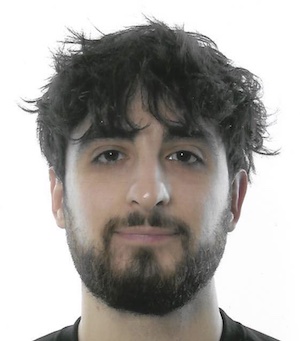 Daniele Pica
Daniele Pica
This email address is being protected from spambots. You need JavaScript enabled to view it.
Title: Effective one-body description of binary black holes and its extensions.
Since the first detection of gravitational waves in 2015 from the LIGO-Virgo-KAGRA collaboration, the study of the physics and of the dynamics of binary systems in General Relativity has become of paramount importance. At the same time, technological progress is making enormous steps forward and soon there will be available detectors of third generation with extreme high sensitivity. This requires also an improvement of the analytical understanding of the physics that the experiments will be able to detect. In view of this, the aim of this research project is to develop a systematic method for investigating how a 2-body system is modified by an external influence, such as a curved geometry or a third body. Assuming R < < L, where R is the length/time scale of the 2-body system and L the length/time scale of the external influence, we plan to develop an analytical method that captures the dynamics up to some desired order in an expansion in R/L. The methodology we plan to use will take inspiration from the powerful “blackfold” approach, which has been successfully used to describe black brane solutions in higher-dimensional spacetimes, and the Matched Asymptotic Expansions method. For the 2-body system, we will develop a modification of the Effective One Body approach, which is the most accurate and powerful method currently used to describe the dynamics of a binary system in General Relativity, to include the modification for the metric due to the presence of an external influence.
XXXVI Cycle - Ongoing
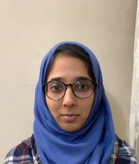 Sehar Ajmal
Sehar Ajmal
This email address is being protected from spambots. You need JavaScript enabled to view it.
Title: Searching for New Physics at LHC and Future Colliders.
Topic: The research project will focus on signals of physics beyond the Standard Model (BSM) at the LHC, as well as its High Luminosity option (HL-LHC) and future colliders.
We plan to study specific signatures of a composite fermion scenario where excited (heavy) states interact with SM ordinary fermions with both gauge and contact interactions. This model has been recently the object of detailed phenomenological studies in close synergy with two experimental analyses by the CMS Collaboration in the di-lepton and di-jet channel. Other final states should be studied in order to address the mass reach of other exotic particles, like for instance charge 5/3 quarks, at different collider options.
 Luca Bertini
Luca Bertini
This email address is being protected from spambots. You need JavaScript enabled to view it.
Title: Role of fast dynamics for complexation of M-pro from SARS-COV-2 with inhibitors
Topic:
The aim of this project is to provide a framework for the optimization of the interaction between the Main Protease (M-pro) from SARS-COV-2 with its putative inhibitors by means of a multi-technique approach.
Structure and dynamics of M-pro will be investigated both in its unbound state and following complexation with several inhibitors, including the alpha-ketoamides 13a and 13b, in order to provide a basis for the development of broad-spectrum anticoronaviral drugs.
Following the preparation of the samples, in-house spectroscopic techniques (such as UV-VIS absorption and circular dichroism) will be deployed, along with neutron scattering measurements performed at European large scale facilities like ILL in Grenoble (France) and MLZ in Munich (Germany).
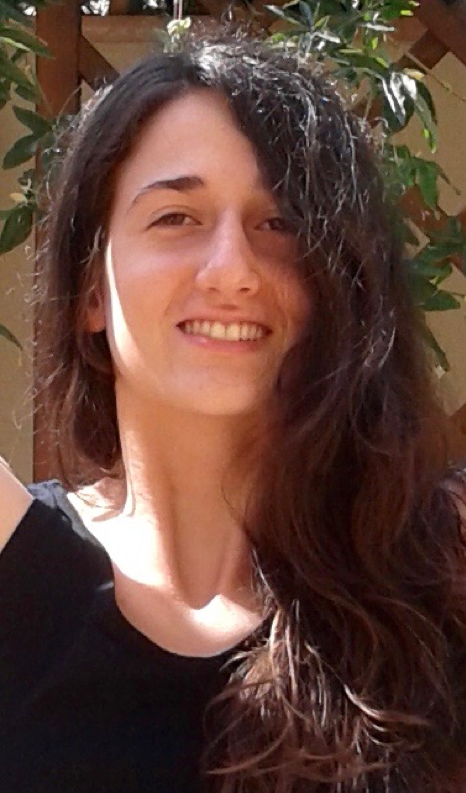 Diletta Borselli
Diletta Borselli
This email address is being protected from spambots. You need JavaScript enabled to view it.
Skype: diletta.borselli
Title: Study of muon radiography applied to the civil engineering, geology and mining fields for the development of a non-invasive survey methodology for the securing of touristic sites and edifices of cultural and historical interest.
Topic: The work for the doctoral project is dedicated to the application of the muon radiography technique in the geological-mining field for the safety of some areas inside the Temperino mine and the Collins mine located in the San Silvestro Park in Campiglia Marittima (LI). The muon radiography technique allows, through muon absorption measurements, to create two-dimensional and three-dimensional images of the internal structure of the target. The project, in collaboration with the INFN of Florence and the Parchi Val di Cornia spa company, provides for a series of on-site measurements and the development and optimization of algorithms for the three-dimensional reconstruction of cavities and tunnels in still unexplored areas of the mine. In part, I will also work on the assembly of new detectors for muographic applications in various fields: geophysical, archaeological, civil and nuclear safety.
Publications:
G.Baccani et al., The MIMA project. Design, construction and performances of a compact hodoscope for muon radiography applications in the context of archaeology and geophysical prospections, JINST volume 13 (2018), P11001
 Matteo Magherini
Matteo Magherini
This email address is being protected from spambots. You need JavaScript enabled to view it.
Title: Vector boson scattering with tau leptons hadronic decays in the final state at proton-proton collision in CMS at LHC.
Topic:
The observation of the Higgs boson from ATLAS and CMS collaborations confirmed the standard model (SM) of elementary interactions. The presence of the Higgs boson, with couplings compatible with those predicted by the SM, provides evidence that contributions from the exchange of this boson may be responsible for preserving unitarity at high energies. However, new phenomena may be present in the electroweak symmetry breaking sector, where a probe of new physics is naturally given by the study of the scattering of massive electroweak bosons, know as vector boson scattering, at high energies, which cross section doesn’t diverge due to a cancellation provided from the exact SM coupling of the Higgs boson with the gauge bosons.
In my research project, we are planning to analyze a particular scattering of two gauge vector bosons: the one between two same-sign W bosons. In this framework, the goal of this research project is to include the hadronic decays of tau leptons as a probe for the final state, which have never been considered before. Thanks to the correlation between different final states and the inclusion of hadronic tau leptons decay, we plan to enhance the sensitivity to discrepancies from the Standard Model over the current results.
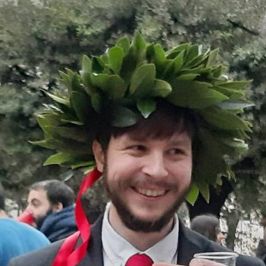 Gabriele Martelli
Gabriele Martelli
This email address is being protected from spambots. You need JavaScript enabled to view it.
Title: Study of the rare decay Σ^+→pμ^+ μ^- at LHCb
Topic:
This PhD work will focus on the analysis of the LHC Run2 data for the study of decay in dimuonic final states at LHCb. The decay can be described as proceeding through an s d quark flavor changing neutral current (FCNC) interaction, allowed only at loop level in the Standard Model, and by internal conversion. This decay is of interest since it also allows a direct search for a new scalar or vector particle, which could contribute an s d transition at the tree level. The results of this work will be compared with those of the previous analysis and with those obtained from the HyperCP experiment, which hypothesizes to have found a new vector boson that would open the way for new physics beyond the Standard Model.
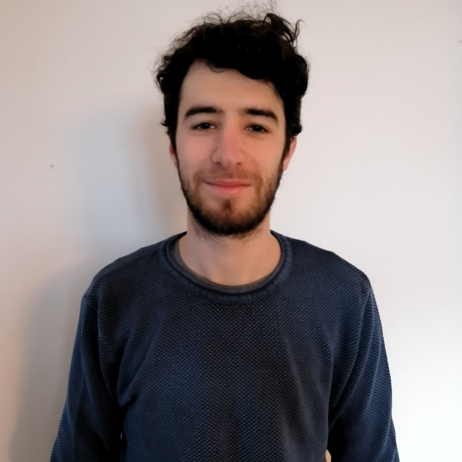 Stefano Moneta
Stefano Moneta
This email address is being protected from spambots. You need JavaScript enabled to view it.
Title: Precision electroweak measurements at the Belle II experiment
Topic:
Belle II is currently the leading particle physics experiment at the luminosity frontier. Located at the SuperKEKB electron-positron collider, it plans to collect 50/ab integrated luminosity by 2030, looking for hints of new physics beyond the Standard Model.
My doctoral research project takes place within the Belle II Perugia group. The main activities include precise measurement of tau-lepton lifetime and analysis of rare B-meson decays. Furthermore, the group plays an important role in electromagnetic calorimeter operations. In particular, it is involved in background monitoring, leakage corrections, and studies for the full luminosity upgrade.
Evaluation
2020 - Kick-off (slide not available)
Annual Reports (from 2023)
Additional Info
Contacts
This email address is being protected from spambots. You need JavaScript enabled to view it.
https://www.unipg.it/en/courses/phd-program